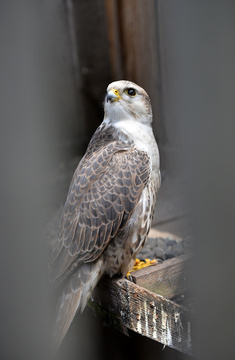Altai State University together with Saylyugem National Park begins work on the reintroduction of Red Book saker falcons
 This year Sailyugem National Park begins to implement a five-year program to restore the population of the Red Book saker falcon. The implementation of the program will be carried out by the National Park in cooperation with the Altai-Falcon nursery for rare birds of Altai State University and the World Wildlife Fund (WWF), the press service of the Russian Ministry of Natural Resources reported.
This year Sailyugem National Park begins to implement a five-year program to restore the population of the Red Book saker falcon. The implementation of the program will be carried out by the National Park in cooperation with the Altai-Falcon nursery for rare birds of Altai State University and the World Wildlife Fund (WWF), the press service of the Russian Ministry of Natural Resources reported.
Within the framework of the program, it is planned to build a new flywheel already this year on the basis of Altai-Falcon, where birds will be prepared for release into the wild on the territory of Saylyugem National Park. The result of the project will be an increase in the number of saker falcons, which will allow experts to identify from the existing nesting sites, many of which are currently empty.
“The project is promising from technical, scientific and environmental perspectives, since the population has been significantly undermined by poachers. Now the pressure has decreased, and we believe that the time has come for the restoration of the saker falcon population,” says Denis Malikov, Director of Salyugem National Park.
According to him, it is assumed that the AltSU nursery for rare birds will supply individuals of different ages: chicks that will be placed in wild nests with foster parents, as well as adult birds that have undergone preliminary adaptation in flight enclosures.
Preparations for the implementation of the program began in 2020, when specialists from the Altai-Falcon nursery, specializing in the reintroduction of the Red Book saker falcon into natural habitats, visited Saylyugem National Park. Together with the staff of the protected areas, nesting sites of the species were investigated, the food supply of birds was studied, and the level of protection of the territory was assessed. As a result, a joint decision was made on the feasibility of releasing birds into a specially protected natural area.